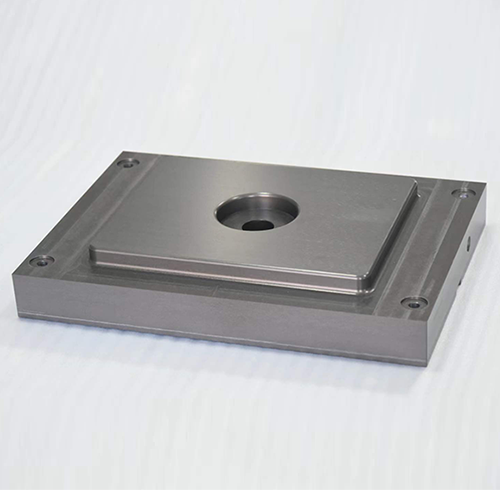Hello, welcome to Dalian Kaide Precision Machinery Co., Ltd!
Dalian Kaiman Technology Co., Ltd
Dalian Kaide Precision Machinery Co., Ltd
Contacts:Sun Zong
Mob:+86-13555929577
Tel:+86-0411-88026630
Email:dlkdjmjx@163.com
URL:www.dl-kd.com
Add:Fuquan Construction Group Hospital, Zhanqian street, Jinzhou District, Dalian
Dalian automobile parts processing is an indispensable part of the automobile manufacturing process, and its technical level directly affects the performance and quality of automobiles. With the continuous innovation of materials, processes, and equipment, automotive parts processing will develop towards lightweight, intelligent, green, and customized directions. In the future, automotive parts processing will continue to provide strong support for the progress of the automotive industry.
In order to improve production efficiency and product quality, automotive parts processing is gradually developing towards automation and intelligence. The application of technologies such as automated production lines, robot processing, and intelligent detection systems greatly reduces manual intervention and improves production stability and consistency.
What is the fundamental reason for surface burns during the processing of automotive parts in Dalian?
Improper selection of cutting parameters
Excessive cutting speed will increase the number of friction between the cutting edge and the workpiece per unit time, generating a large amount of cutting heat. At the same time, the ability of chips to carry away heat during high-speed cutting is relatively weakened, resulting in heat accumulation in the cutting area, causing a sharp rise in the surface temperature of the parts and leading to surface burns.
Excessive feed rate will increase the thickness of the cutting layer, increase the cutting force, and generate more heat. Moreover, a larger feed rate can hinder the smooth discharge of chips, further hindering heat dissipation and easily causing surface burns.
Excessive cutting depth will significantly increase cutting force and cutting power, resulting in a corresponding increase in heat generation. If it exceeds the bearing range of the tool and workpiece material, it will cause excessive surface temperature and burn phenomenon.
Tool factor
The heat resistance of the cutting tool material is insufficient, and it is easy to lose hardness and wear resistance at high temperatures, resulting in a decrease in cutting performance, an increase in cutting force, and the generation of more heat, causing surface burns. For example, ordinary high-speed steel cutting tools are prone to this situation when processing high hardness materials due to insufficient heat resistance.
After the tool edge wears out, the cutting edge becomes dull, and the squeezing and friction effects during cutting increase, resulting in a significant increase in cutting force and heat generation. At the same time, worn edges can also make it difficult for chips to form and dissipate, resulting in ineffective heat dissipation and surface burns on the parts.
Unreasonable geometric parameters of the cutting tool, such as a small rake angle, can increase cutting deformation, cutting force, and cutting heat; If the back angle is too small, the friction between the tool face and the workpiece surface will intensify, and excessive heat will be generated, which may lead to surface burns.
Improper use of cutting fluid
The insufficient cooling performance of cutting fluid cannot timely remove the heat generated during the cutting process, which will increase the temperature of the cutting area and increase the risk of surface burns. For example, selecting cutting fluid with low thermal conductivity or inappropriate cutting fluid concentration can affect its cooling effect.
The poor lubrication performance of cutting fluid can increase the friction between the tool and the workpiece, generating more heat. At the same time, insufficient lubrication can also lead to increased adhesion between chips and cutting tools, affecting the discharge of chips and causing heat accumulation, resulting in surface burns.
Insufficient or uneven supply of cutting fluid, which cannot fully cover the cutting area, cannot effectively exert cooling and lubrication effects, resulting in high local temperatures and surface burns.
Material characteristics of workpiece
The hardness of the material is high, and the cutting force during processing is large, resulting in a lot of heat generated. Moreover, materials with high hardness often have poor thermal conductivity, making it difficult for heat to dissipate and accumulate on the surface, leading to surface burns. For example, some high-strength alloy steels and hard alloy materials require special attention to prevent surface burns during processing.
The material has good toughness, large plastic deformation during cutting, consumes a lot of energy, and generates a large amount of heat. At the same time, materials with good toughness have chips that are not easily broken and can easily wrap around the cutting tool, affecting heat dissipation and increasing the possibility of surface burns. Some aluminum alloy materials have such characteristics.
Stability of processing technology system
Insufficient precision of machine tools, such as spindle runout and straightness errors of guide rails, can cause changes in the relative position between the tool and the workpiece, resulting in unstable cutting forces and additional heat generation. Moreover, poor machine tool accuracy can also affect the quality of the machined surface, leading to local overheating and surface burns.
Inaccurate positioning accuracy or uneven clamping force of the fixture can cause displacement or deformation of the workpiece during the machining process, resulting in changes in cutting force and excessive heat generation. At the same time, the deformation of the workpiece can also cause uneven stress distribution on the machined surface, which can easily lead to local burns.
The vibration during the machining process, whether it is the vibration of the machine tool itself or the vibration between the tool and the workpiece, will cause fluctuations in cutting force, resulting in uneven heat generation. Vibration can also intensify the friction between the tool and the workpiece, further increasing heat and causing surface burns.
Mechanical machining is one of the common processes in automotive parts processing, mainly including turning, milling, drilling, grinding, etc. These processes process metal materials using cutting tools to achieve the desired shape, size, and surface accuracy. For example, key components such as engine cylinder blocks, crankshafts, connecting rods, etc. require precision machining to ensure their performance and reliability.
Before processing, it is necessary to design and develop the components. Designers use computer-aided design (CAD) software to perform 3D modeling and structural optimization of components based on the overall performance requirements of the car. After the design is completed, simulation analysis is also required to ensure that the performance indicators such as strength, stiffness, and durability of the components meet the requirements.


Focus on us
National consultation hotline:
+86-0411-88026630
Tel:+86-13555929577
Email:dlkdjmjx@163.com
Add:Fuquan Construction Group Hospital, Zhanqian street, Jinzhou District, Dalian